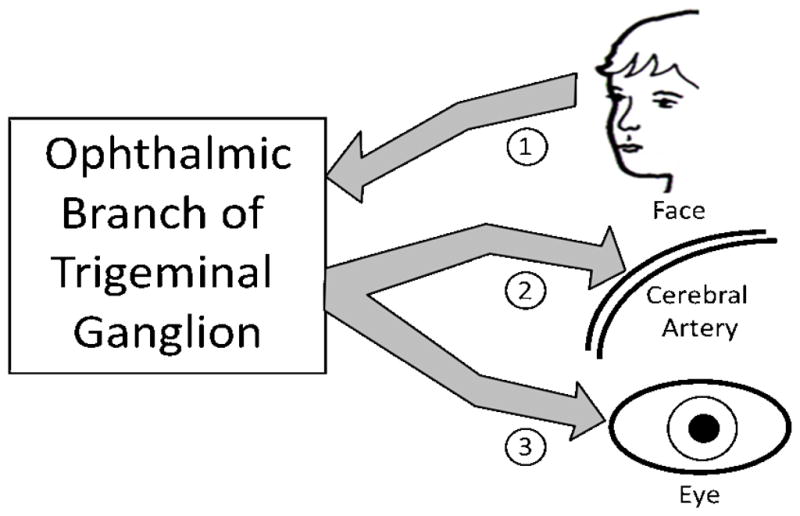Figure 2.

Stroke after varicella infection. Stroke after varicella infection requires viral transit to the cerebral arteries. Since the varicella exanthem commonly involves the face, the most likely route involves retrograde spread of virus from the face to the trigeminal ganglion via the ophthalmic branch (arrow 1). From the trigeminal ganglion, virus can spread via anterograde circuits to a cerebral artery (arrow 2) or the eye (arrow 3). Viral replication in the endothelial lining of an artery leads to inflammation and subsequent stroke. These events are most obvious when zoster ophthalmicus is present, but varicella related stroke can occur without an overt zosteriform rash on the face.
